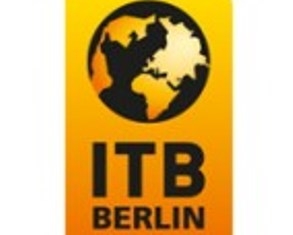Luxury travel booming , largest markets USA and China

Berlin : Luxury travel is booming and high-price trips are the strongest-growing market segment worldwide, according to ITB Berlin and IPK International.
The most popular luxury travel destinations in Europe are Germany and Italy .Most luxury travellers come from the USA and China
More and more holidaymakers are spending heavily on the best weeks of the year. With a 48 per cent increase in the last five years, luxury travel has grown twice as fast as all other types of foreign trips, which grew by 24 per cent. This is the result of a special evaluation of the World Travel Monitor, which is conducted by IPK International and commissioned by ITB Berlin.
Luxury trips were defined for this analysis as all short trips with spending of more than 750 euros per night and all long trips costing more than 500 euros per night. In 2014, the world population undertook 46 million international luxury trips. The market share of these trips rose from 3.9 per cent in 2009 to 4.6 per cent in 2014.
A total of 172 billion euros was spent on international luxury travel last year. This means that for foreign travel every eighth euro was spent on luxury products. More than 1,000 euros per night was spent by luxury travellers from the United Arab Emirates, India, Kuwait, Brazil, Australia, Canada and China (in descending order). Turnover did not increase due to higher spending per person but rather from a rising number of travellers. Growth drivers were above all new customers in emerging markets, who moved up into the luxury travel segment, or those who returned to the luxury market after the crisis, such as travellers from the USA.
The largest source markets for luxury travel are the USA, with 9.2 million foreign luxury trips, and China, with 6.9 million. Other major source markets are Japan, Canada and Australia. In Europe, most luxury trips are undertaken by the British, with 1.5 million, ahead of the French and the Germans.
The largest growth rate was in the number of luxury trips undertaken by the Chinese, followed by the USA, Canada, Taiwan, Korea and the UAE. Russia also showed strong growth until 2013 but the figures declined last year. The luxury travel markets in Japan (-20 per cent), Mexico and Scandinavia also dropped back.
The most popular luxury travel destination by far was the USA, with 6.2 million trips, ahead of China and Mexico. In Europe, Italy and Germany share first place with 2.2 million luxury travel visitors each, ahead of France and Great Britain. The highest increases in the number of luxury travel stays were registered in recent years in the USA and Germany, followed by Argentina, Brazil, Paraguay, Uruguay, Japan and South-East Asia. The Caribbean and New Zealand also showed very positive trends in the high-price market.
Holidays abroad represent the dominant share of all luxury trips with 74 per cent. The most popular types of luxury holidays are tours, with 29 per cent, followed by city trips, beach holidays and cruises. The remaining 26 per cent of luxury trips are on business, with Meetings, Incentives, Conventions and Events (MICE) as the travel purpose for most of these trips.
For luxury travel planning the internet is used far more than on average. But only for information purposes. Half of all luxury travellers book their holiday through a travel agent, which is a much higher share than for other travellers.
Dr. Martin Buck, Messe Berlin’s Director of Travel & Logistics, commented: “Many travellers define luxury differently today to previously. Instead of magnificent hotel furnishings or so-called ‘bling-bling’, an experience that is priceless in its own way can be enormously valuable. Luxury today means unique experiences combined with the highest levels of comfort and individual services. An increasing number of people are ready to spend a lot of money for quality. The international travel industry has responded to this trend and is profiting from the growing number of travellers who want to enjoy luxury again after financially turbulent years. The real luxury, as the results of our Luxury Lab at this year’s ITB Berlin showed, is having time.” – Messe Berlin/ ITB
June 10 , 2015















